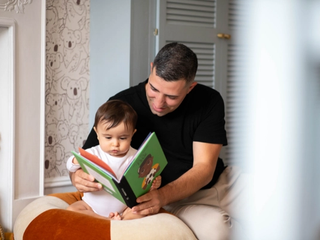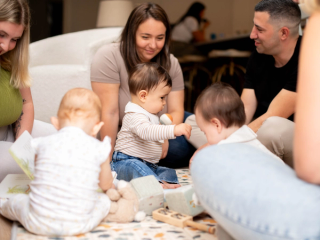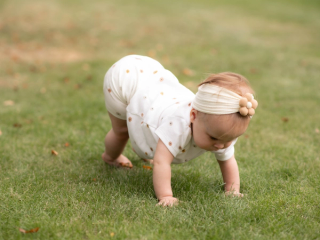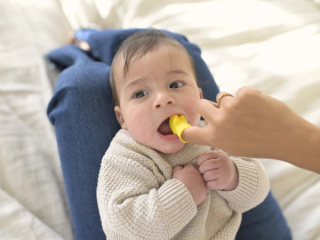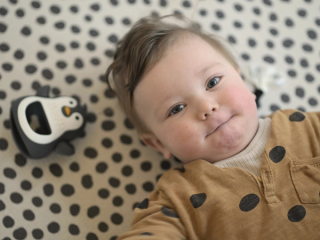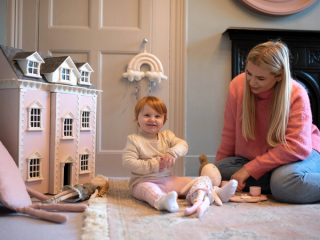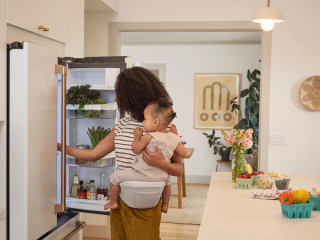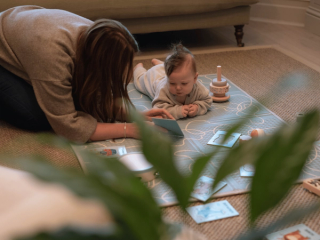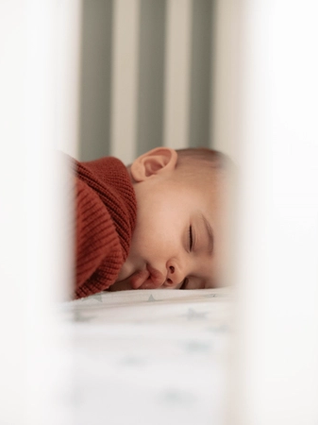
- Home
- Advice Hub
- Baby
- Bonding & Development
- Baby And Toddler Nap Routines
Baby and Toddler nap routines
Our Sleep Expert, Laura, takes a look at how you can set up successful nap routines for your little one, as well as navigate all the nap transitions you will encounter in their first few years.
Creating a nap routine for your child has many benefits, from ensuring your child is well rested to allowing more predictability and structure to your days. As your baby grows up, their sleep needs will change and they will manage to stretch their wake windows, stay awake longer between naps, as well as gradually reduce and drop naps altogether as they approach toddlerhood and preschool age.
So, let’s take a look at how you can set up successful nap routines for your little one, as well as navigate all the nap transitions you will encounter in their first few years.
Creating a nap routine
When it comes to creating your child’s nap routine, we must first ensure that timing is right and you will find more guidance on that in this article to find their ideal nap schedule.
Next there are some things you can do to help your baby settle well for their nap:
- Spend some time outside before nap time to let your child have some natural light.
- Allow your child time for physical activity appropriate to their age and stage. Tummy time, crawling, cruising, dancing, rolling and throwing balls, jumping and climbing!
- Give your child 10-15 minutes of wind down time in their room before starting the nap routine. Dim the lights and have some quiet play looking at books or playing with quiet toys, avoiding toys with lights or sounds during this time.
- Create a pre- nap ritual. This will look a lot like a mini bedtime routine and is actually great if it includes some of the steps from bedtime. For example: Nappy change, sleeping bag, singing the same sleepy song before settling to sleep.
- Try to start settling your baby to sleep or putting them in the cot to settle themselves a few minutes before the end of their wake window to allow them some time to get off to sleep. Around 10-20 minutes is the average time it takes to fall asleep, but you will soon learn how long it tends to take your child.
Short naps
If your baby consistently cat naps, it can be frustrating. No sooner have you settled them to sleep then they are waking again and often they wake like clockwork at exactly the same time! Try the following tips to extend short naps:
- Ensure the sleep environment is conducive to sleep. Your baby needs darkness and a calm non-stimulating environment. You can also use white noise to buffer external noises and help your baby sleep longer.
- Make sure your baby is comfortable., you may need to change your baby or toddler into more comfortable clothing or even pyjamas for naps.
- Ensure timings are right. If your baby was not tired enough at the start of the nap they may not be able to sleep a long enough stretch. If they were over tired this can also cause challenges with staying asleep!
- Make sure your baby has gone to sleep with a full enough tummy. Look at feed and meal timings to ensure they are not waking too early from their nap due to hunger.
- Look at how your baby fell asleep at the start of the nap. If your baby needed your help to fall asleep it is likely when they come out of their first sleep cycle they don’t know how to settle themselves back to sleep. Working on self-settling will help them be able to do this!
- Try ‘catching’ them before they wake. If you can set your watch by your child’s waking then try going to the side of their crib 10 minutes before this and watching for signs they are coming out of a sleep cycle. This could be a little fidget or sigh – the key is to get them BEFORE they come fully out of the cycle. A firm hand on them, patting, stroking or shushing them can help them to knit these cycles together and you should only need to do this for around a week before they can start doing this for themselves and taking longer naps.
Napping on the go
Napping on the go can be a challenge but with a little preparation and practice it can be achieved.
- Plan your outings around your child’s nap times.
- Bring familiar items your baby is used to sleeping with. For example their comfort item.
- Create an environment which will help your child sleep well. A portable white noise machine may be helpful if you use white noise at home. I also highly recommend the Snooze Shade for creating a dark environment and limiting distractions. For 10% off use code: SWEETPEA10OFF
- Do a mini routine before putting your baby into the pram to start the nap – try to make this as similar to the routine at home. E.g. Nappy change, singing the same sleepy song and saying the same words before putting them into their pram.
- Don’t panic if the nap doesn’t happen or is shorter than usual! This will happen sometimes, simply bring the next sleep (nap or bedtime) a little earlier to compensate and try to be at home the next day to focus on getting naps back on track. One bad nap is not the end of the world.
From three to two naps
The first nap transition will happen at around 7–9 months old when your baby will begin to drop their final late afternoon nap of the day, often referred to as a cat nap because it tends to be the shortest nap lasting around 20–30 minutes. This nap tends to drop fairy naturally and you will know your baby is ready when they simply will not settle for it no matter what they do, or you find you cannot fit a third nap in without it affecting bedtime.
One important thing to know about this late afternoon nap is that it is notoriously tricky to settle for. This is because it falls outside of biological sleep windows which are 9–10am, 12–2pm and 6–8pm. However, younger babies still need a third nap to see them through to bedtime, so I would always recommend helping them achieve this cat nap through motion or contact naps. You will notice that somewhere between 6–9 months, even with lots of help, your baby starts to refuse the nap some days – this is the start of the transition!
Your baby may also have started to take longer and more consistent naps for their first two naps of the day, which is great because they will need these in order to get through to bedtime. You will however need to bring bedtime a little earlier for a while on days the 3rd nap is skipped whilst your baby adjusts. Take your time with the transition, some days your baby will take a third nap and some days they won’t and this is perfectly normal. Once you find yourself in a consistent two nap routine you can start to nudge bedtime back gradually.
From two to one naps
Your baby will have two naps a day for a good few months and sometime between 15–18 months may begin to drop their morning nap, leaving just the last nap in the middle of the day. There are a few signs your child could be ready , including; : difficulty settling for the morning nap, settling well for the morning nap but then struggling to settle at lunchtime and/or not napping as long, difficulty falling asleep at night, challenges with their sleep at night, or early morning waking. This transition can take around 4–6 weeks so don’t rush it.
Your toddler will need to start reducing their morning nap gradually until it sits at around 20-30 minutes and then you can begin offering the nap every other day and then every few days until they are able to go every day without it. On days your child is not having a morning nap you will need to bring the lunch nap and bedtime earlier for a while before gradually pushing to 12–12:30 nap again. This could mean that nap time is happening slap bang over lunch, so try offering a split lunch with half offered before the nap and the rest once they wake.
From one to no naps
Sometime around their child’s third birthday children may stop napping altogether. Younger toddlers will still likely need at least 2 hours nap during the day, so if your child is closer to two – persist! They can go through a phase of nap refusal, but that doesn’t mean they’re actually ready to stop napping!
From around 2.5 years your toddler may need to start reducing their lunchtime nap. You will know it’s time to do this when bedtime suddenly become drawn out or night are more disturbed with possible early rising, too. At this point start gradually waking your toddler 10–15 minutes earlier from their nap to allow for extra wake time before bed. You will find a sweet spot for your toddler and can stay at that point from here. For example, you may gradually reduce the nap to 90 minutes and find that works well for your toddler for now. There is no need to continue to reduce the nap again until your child shows more signs of their sleep needs changing.
Over the next few months you may find that your toddler has slowly reduced their nap to around 30 minutes and now there are some days where they just don’t fall asleep for it at all. On days they skip the nap, watch their mood carefully. If they are able to last into the afternoon without becoming grumpy, fractious or extra silly as the afternoon wears on, they may be ready. If not, it’s likely they are becoming overtired and a sleep debt is forming. In which case, continue to offer the nap and offer them support to fall asleep and take the nap.
Once you are confident your child can cope well without a nap you can offer the nap just every other day for a while and then every few days until they can consistently go without it. On days your toddler has not taken a nap they will need a much earlier bedtime, ; it’s absolutely fine for your child to go to bed as early as 6pm if they need to! This is only temporary as they adjust to the loss of daytime naps.
Consider bringing in quiet time in lieu of a nap during this transition period. This is a time during the middle of the day your child can take to decompress and reenergise. Offer your child some special non- screen activities that are saved for this time; ideally they will be able to do these independently. Some great options are books, colouring, jigsaws or audio books. You may need to build up how long your child can spend participating in quiet time. Use a timer and start as small as 2 minutes, building up to longer and offering lots of praise to your child.
Advice & tips

Want to read more? Join the HiPP BabyClub for full access to this article.
As a BabyClub member, you'll get access to a range of exclusive benefits, including:
Monthly competitions
Discounts from our Partners
Expert advice tailored to your little one's age
Weaning recipes
HiPP shop discounts*
*10% off HiPP's online shop does not apply to our First Infant, Anti-Reflux or Comfort Formula Milk.
Important notice: Breastfeeding is best. Follow on milk should only be used as part of a mixed diet from 6 months. Talk to a healthcare professional.





